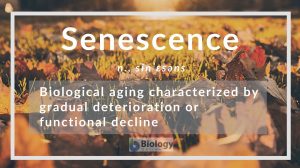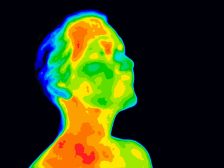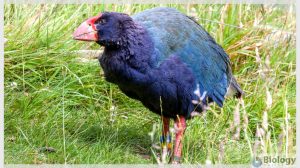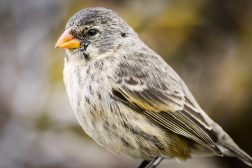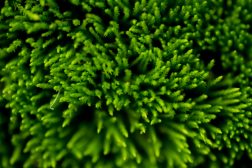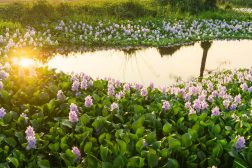
Senescence
n., sɨnˈɛsəns
Biological aging characterized by gradual deterioration or functional decline
Table of Contents
Senescence Definition
Senescence is defined as biological aging. In cell biology, it refers to the cell wherein it is no longer capable of dividing although it is still metabolically active and alive. Etymologically, the term is derived from Latin senēscere, meaning “to grow old”.
Info
Senescence pertains to the biological aging of a living thing. It entails the gradual deterioration of morphological features and the function of a cell or of the whole organism.
On the cellular level, senescence is that stage in a cell’s cycle wherein it ceases to divide. For instance, a fibroblast cell undergoes a maximum of 50 mitotic divisions and then becomes senescent. This is referred to as the Hayflick phenomenon. (Ref. 1) It naturally occurs and results from the shortening of telomeres that eventuates in DNA damage. Cellular senescence is also associated with excessive exposure to reactive oxygen species, oncogene activation, and cell to cell fusion. When a cell is in senescence, it no longer divides but still remains metabolically active.
At the level of the whole organism, senescence is manifested when the organism ages. The ability to function and to deal with stress will deteriorate with age. In aging humans, the body becomes more vulnerable to dysfunction and diseases. Aging is heterogeneous, meaning multiple organ systems are experiencing a functional decline. (Ref. 2)
In plants, senescence is similarly the last developmental stage. Hormones, such as ethylene and abscisic acid are some of the well-recognized hormones that promote senescence in plants. The process may occur at various levels, e.g at the organ level (e.g. leaf senescence) and at the organismal level (e.g. as exhibited by the annuals that die after one season). (Ref. 3) Senescence is important to plants’ fitness and survival. The trees, for instance, will relocate the nutrients from senescing autumn leaves to stems or roots so that they can be used later during the development of new leaves or flowers. (Ref. 3)
See Also
References
- Hayflick L, Moorhead PS (December 1961). “The serial cultivation of human diploid cell strains”. Exp. Cell Res. 25: 585–621.
- McHugh, D., & Gil, J. (2017). Senescence and aging: Causes, consequences, and therapeutic avenues. Journal of Cell Biology, 217(1), 65–77. https://doi.org/10.1083/jcb.201708092
- Woo, H. R., Kim, H. J., Nam, H. G., & Lim, P. O. (2013). Plant leaf senescence and death – regulation by multiple layers of control and implications for aging in general. Journal of Cell Science, 126(21), 4823–4833. https://doi.org/10.1242/jcs.109116
Further reading:
- Cellular Senescence Could be Key to Treatment for Aging – BioTechniques. (2019, August 2). BioTechniques. https://www.biotechniques.com/preclinical/designing-better-treatments-for-aging/ (Treatments for aging and cancer could be improved thanks to new senescence research)
©BiologyOnline. Content provided and moderated by BiologyOnline Editors.
